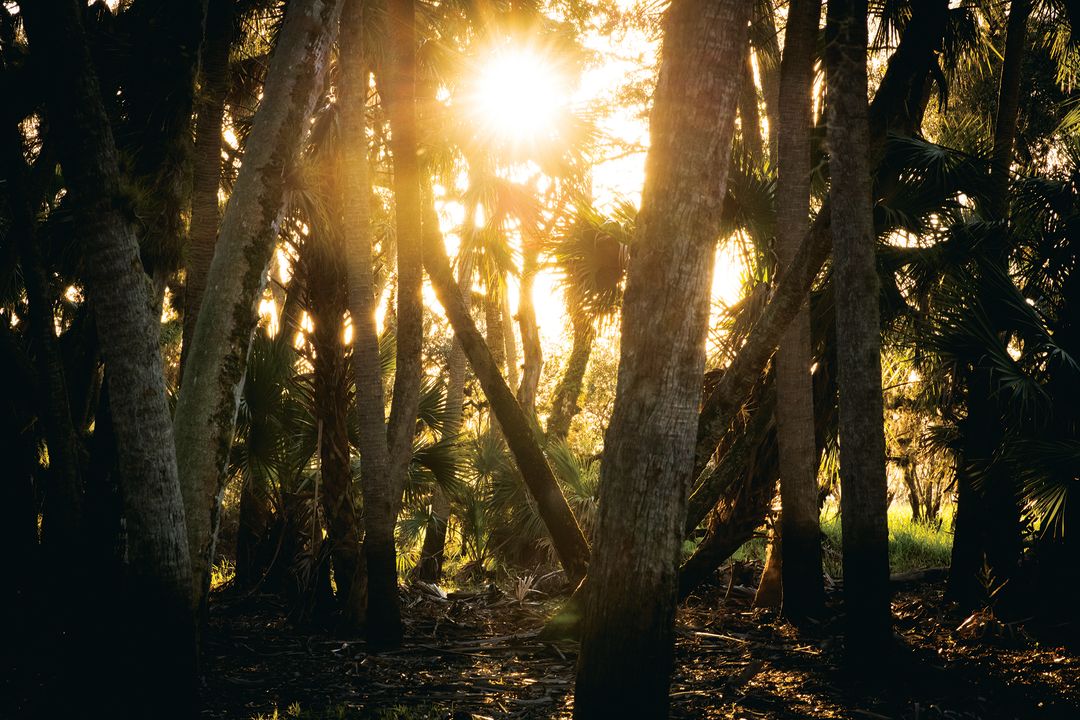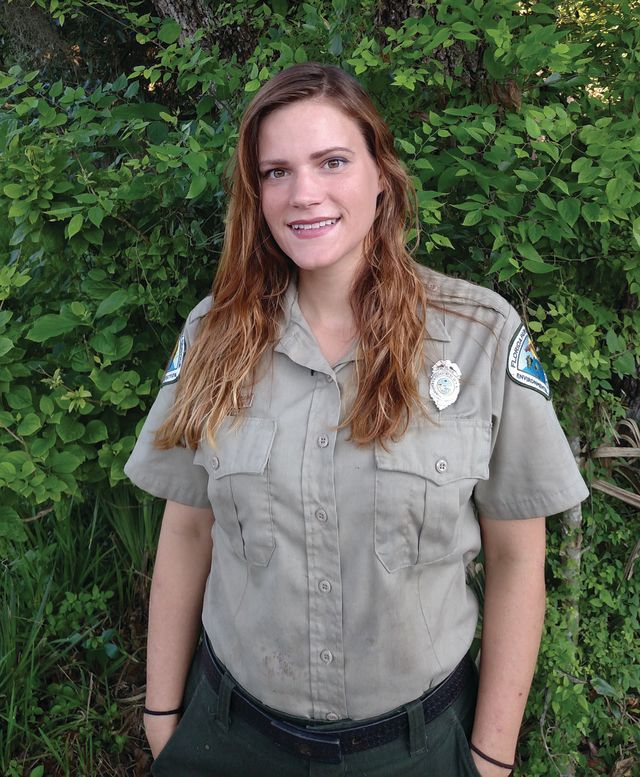Some Lucky People Don't Just Work at Myakka—They Live There

Image: Everett Dennison

Rebecca Armstrong
Rebecca Armstrong, Myakka River State Park’s biologist, lives in a weathered single-wide trailer under a hammock of trees inside the park with her husband Parker Hinson, a GIS analyst, and big mixed hound, Westley. Armstrong paid $4,000 for the 1980s mobile home with a tiny screened-in porch, and she couldn’t be happier with her living situation.
The price was a bonus, says Armstrong, 27, since Sarasota homes can be out of reach for rangers whose salaries range from $26,000 to $50,000. But affordability is not the best part of living in the park. “I’m able to protect and serve the land by living here,” she says. “I was wearing fire gear and fighting a fire late into the evening seven days before my wedding. You develop a deep attachment to the land when you work and live on it.”
Eleven of the park’s 21 staffers live inside park boundaries with their families. Four of the residences are employee-owned trailers like Armstrong’s, and the others are smallish, state-owned single-family homes. Rangers often wait years before a place becomes available. “I got lucky,” says Armstrong, who commuted from North Port for 18 months before landing the trailer.
Armstrong’s setting is Florida-postcard beautiful. She wakes up, brews a cup of coffee and sits under the trees to watch the sun rise over the prairie. Her commute to the ranger station is two minutes.
And so is the walking distance to most other rangers’ homes. Charlie Brown, Myakka Park’s assistant manager, is one of Armstrong’s closest neighbors. He’s lived in Florida parks for 36 years and raised his four sons, now all in their 30s, in one or another of them. He’s following the tradition with his 9-year-old daughter.
Living in a state park isn’t for everyone. “There’s no pizza delivery,” Brown says. And kids must entertain themselves. TV and landlines are rare inside the park, and internet connections are spotty and slow.
“Your back yard is the park,” Brown says. “My sons needed to learn what they could mess with and what they couldn’t, like diamondback rattlers.” But they were free to roam within a whistle’s distance, often accompanied by their yellow Lab, and growing up as a band of brothers in the woods has kept them close to this day. “The boys had to be their own best friends,” he says.
The park has seasonal residents as well. Sometimes called roving retirees, they tend to be seniors who own RVs and travel the country volunteering in state and national parks in exchange for free rent. About 40 of them make their way to Myakka Park and camp there November through April. The park wouldn’t run smoothly without them, says Armstrong. They maintain trails and facilities, manage the park’s resources, repair machinery and greet visitors at the entrance. Many come year after year. Volunteer Leo Mulcahy, who’s in his 80s, drives a big RV down from upstate New York. He and his late wife Teddy made the trip for more than 30 years; now his son makes the journey with him.
“Most of our volunteers put in way more hours than they have to because they love the park and the staff so much,” says Armstrong. On Friday nights volunteers join the rangers for Happy Hours around a campfire, and Sunday afternoons, everyone is invited to a potluck in a log cabin.
It’s impossible to stereotype the personalities of people who want to live at the park, says Armstrong. “We’re not all the same,” she says, “but we’re all devoted to the land. It brings us together.”



